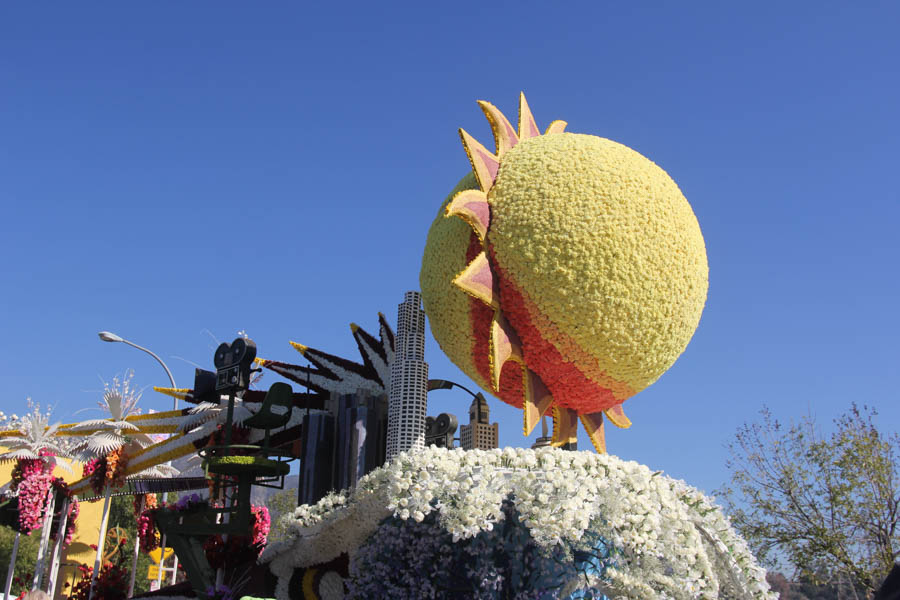Rose Parade Floats (Page Six)
Youth is when you're allowed to stay up late on New Year's Eve. Middle age is when you're forced to. - Bill Vaughn
We Are Off To Pasadena To See The Floats (Page Six)
Did You Know? - The 126th edition of the annual Rose Parade i.e., Rose Parade 2015 presented by Honda took place on Thursday, January 1, 2015 at 8 am Pacific Time with a theme of "Inspiring Stories".
The late Louis Zamperini will be Grand Marshall of this years parade and the parade will feature 41 floats, 20 bands and 18 equestrian units with approximately 400 horses.
Did You Know? - The Rose Parade, also known as the Tournament of Roses and the Rose Parade presented by Honda, is part of "America's New Year Celebration" held in Pasadena, California each year on New Year's Day (or on Monday, January 2 if New Year's Day falls on a Sunday). The parade includes flower-covered floats, marching bands, and equestrians and is followed by the Rose Bowl college football game. It is produced by the non-profit Pasadena Tournament of Roses Association.

A short walk from the Boy Scouts to the entrance (Courtesy of Hans Thedens)
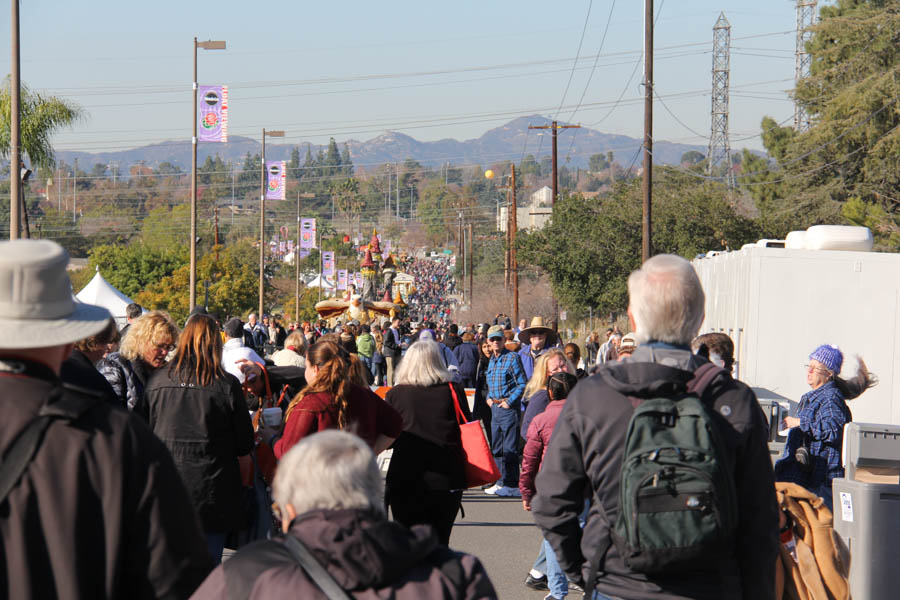
We and a few others made it today (Courtesy of Hans Thedens)

Simply amazing colors

Hans spotted the potatoes (Courtesy of Hans Thedens)
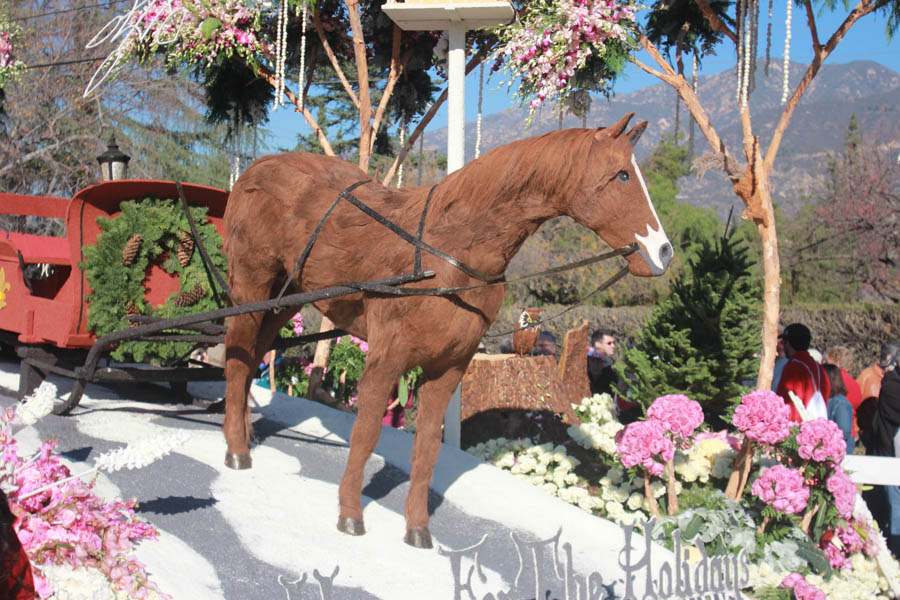
Brian asked if they had shot the horse and stuffed it
Did You Know? - Originally started on January 1, 1890, the Rose Parade is watched in person by hundreds of thousands of spectators on the parade route, and is broadcast on multiple television networks in the United States. It is seen by millions more on television worldwide in more than 100 international territories and countries.
The Rose Bowl is a college football game that was added in 1902 to help fund the cost of staging the parade. Since 2011, the parade has been sponsored by Honda. Accordingly, the car company has the parade's first float, which like all floats, follows the parade's theme.

The Finch's ARE HOME for the holidays

Exquisite details (Courtesy of Hans Thedens)
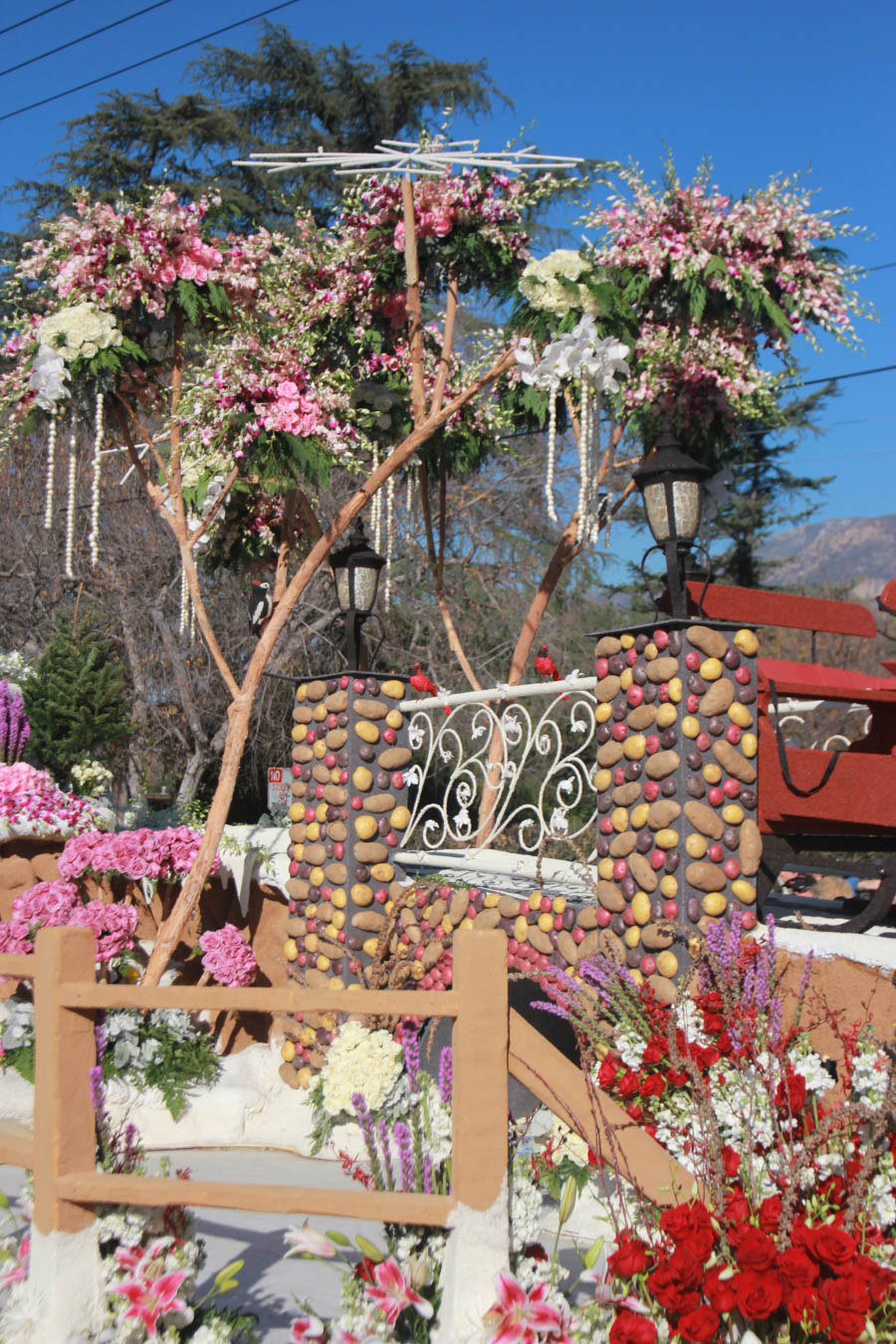
Check the potatoes

We saw a post... Hans saw potential vodka (Courtesy of Hans Thedens)
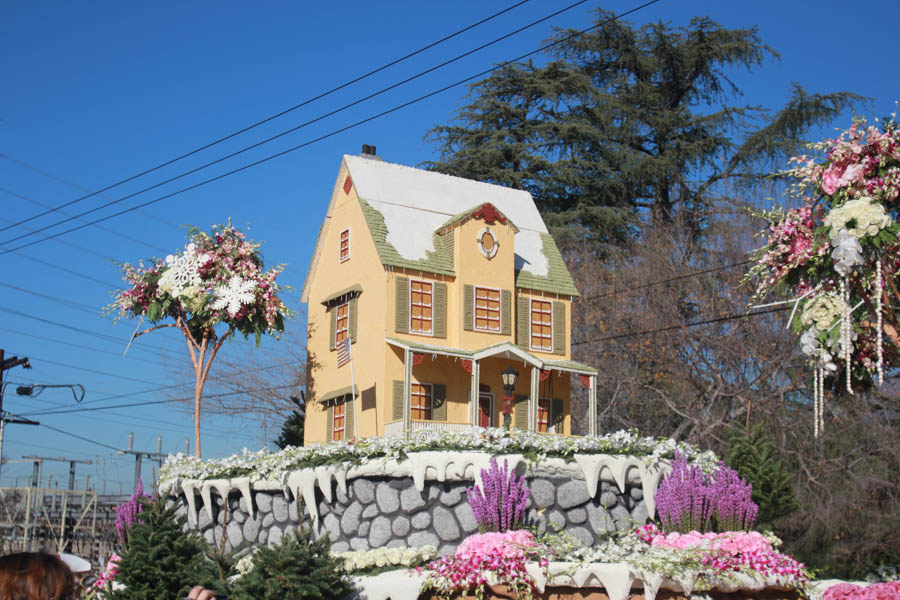
Hard to believe its all live materials

Ah... Romance

We will drink to that... We will drink to anything
The seeds are amazing and allow for a lot of detail
Did You Know? - Originally the parade featured flower-decorated horse carriages. Over time, floats built by volunteers from sponsoring communities supplanted the carriages. Currently most are built by professional float building companies and take nearly a year to construct. Some communities and organizational sponsors still rely on volunteers.
The Valley Hunt Club still enters a flower-decorated carriage.
The Cal Poly Universities Rose Float still relies solely on students who volunteer. Floats are self-propelled on truck chassis in contrast to the Macy's Thanksgiving Day Parade which uses trailer-based floats pulled by new, intact (sponsor-provided) trucks.

After a bottle of champagne, we were walking pretty good!
(Courtesy of Hans Thedens)
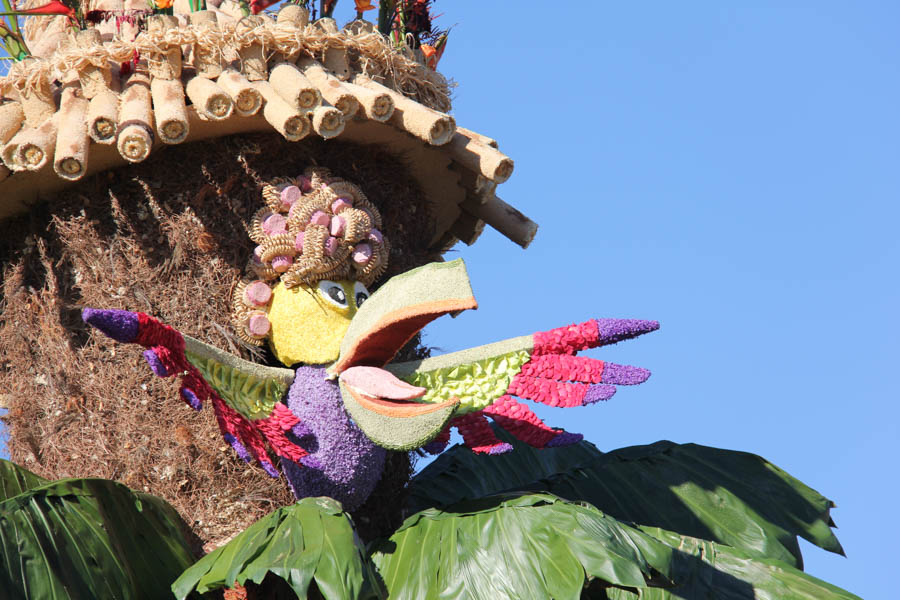
The toucan was very bright (Courtesy of Hans Thedens)
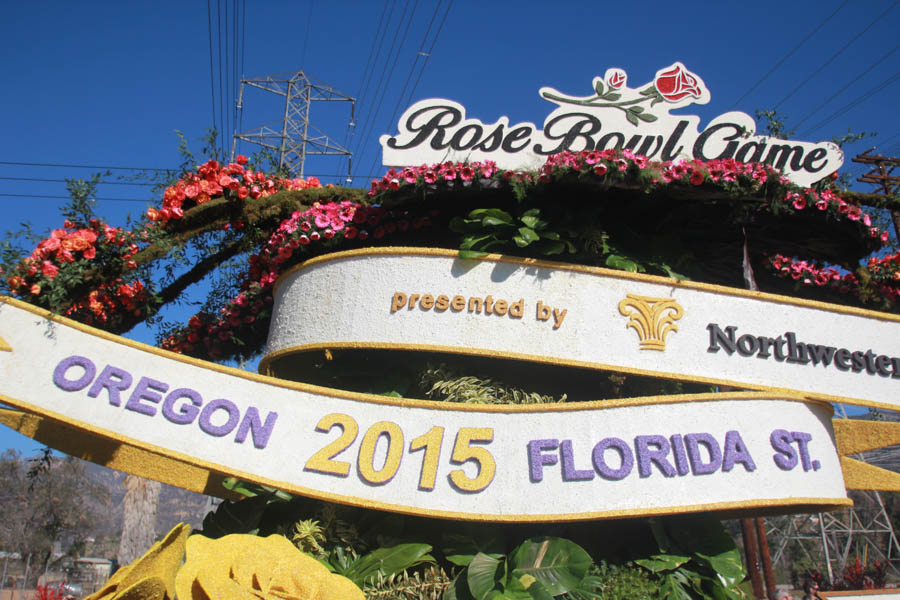
Go Oregon! Yeah Amy
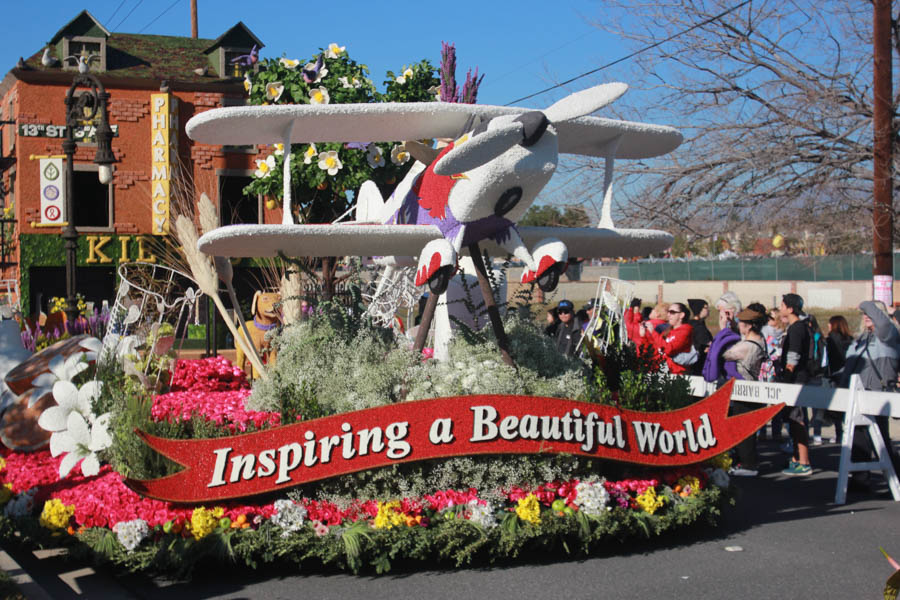
The details are fantastic
Did You Know? - Typically 48 to 72 hours prior to parade day, one can view several of the floats being decorated with flowery mantles in the various 'float barns' that dot the Arroyo Seco / Rose Bowl area in West Pasadena, not far from the start of the parade.
It is a rule of the parade that all surfaces of the float framework must be covered in natural materials (such as flowers, plants, seaweeds, seeds, bark, vegetables, or nuts, for example); furthermore, no artificial flowers or plant material are allowed, nor can the materials be artificially colored. Last-minute volunteer opportunities are usually available.
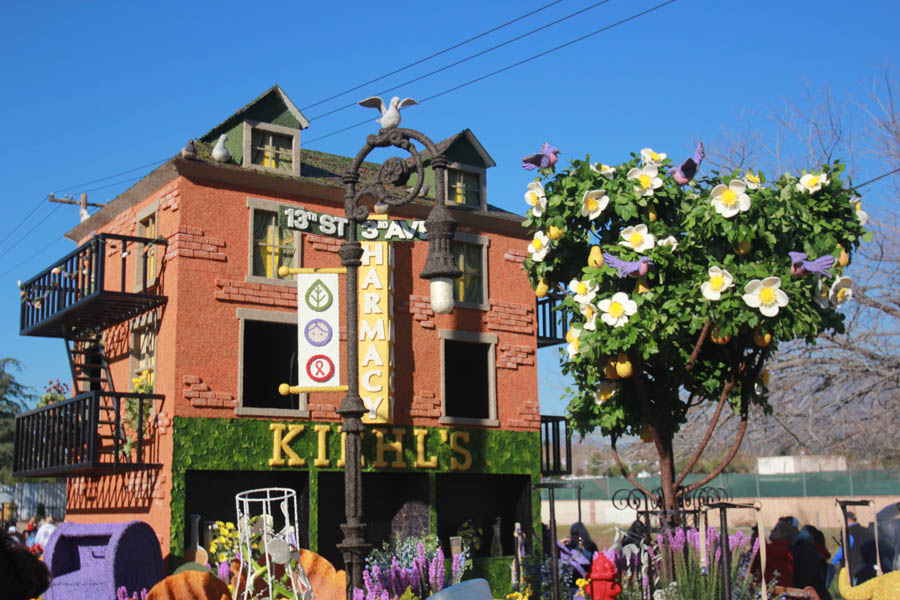
Check the fire escape

Only for purple letters we guess
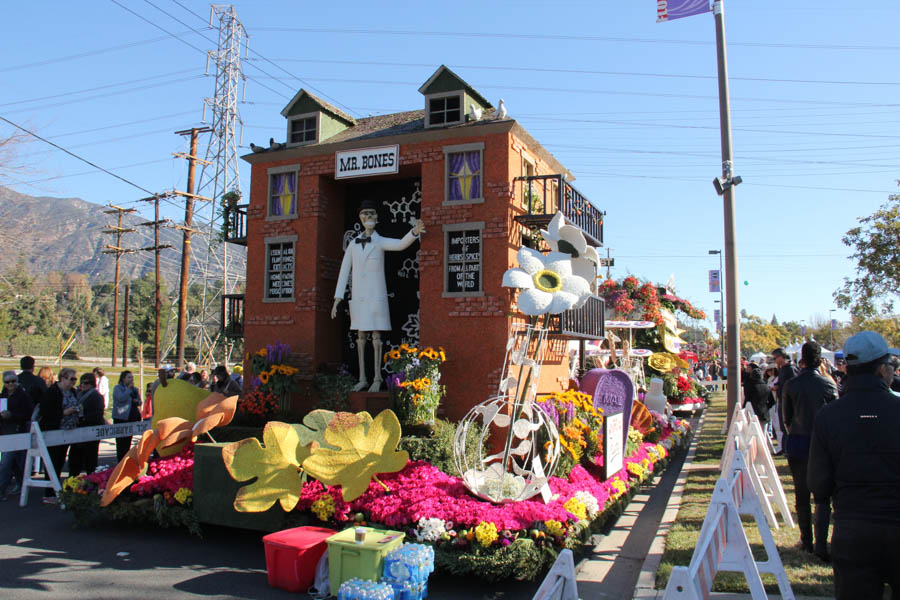
Mr. Bones we presume (Courtesy of Hans Thedens)

The white flowers stood out in the bright sunlight
Did You Know? - The floats compete for one of 24 awards selected by three judges each year.
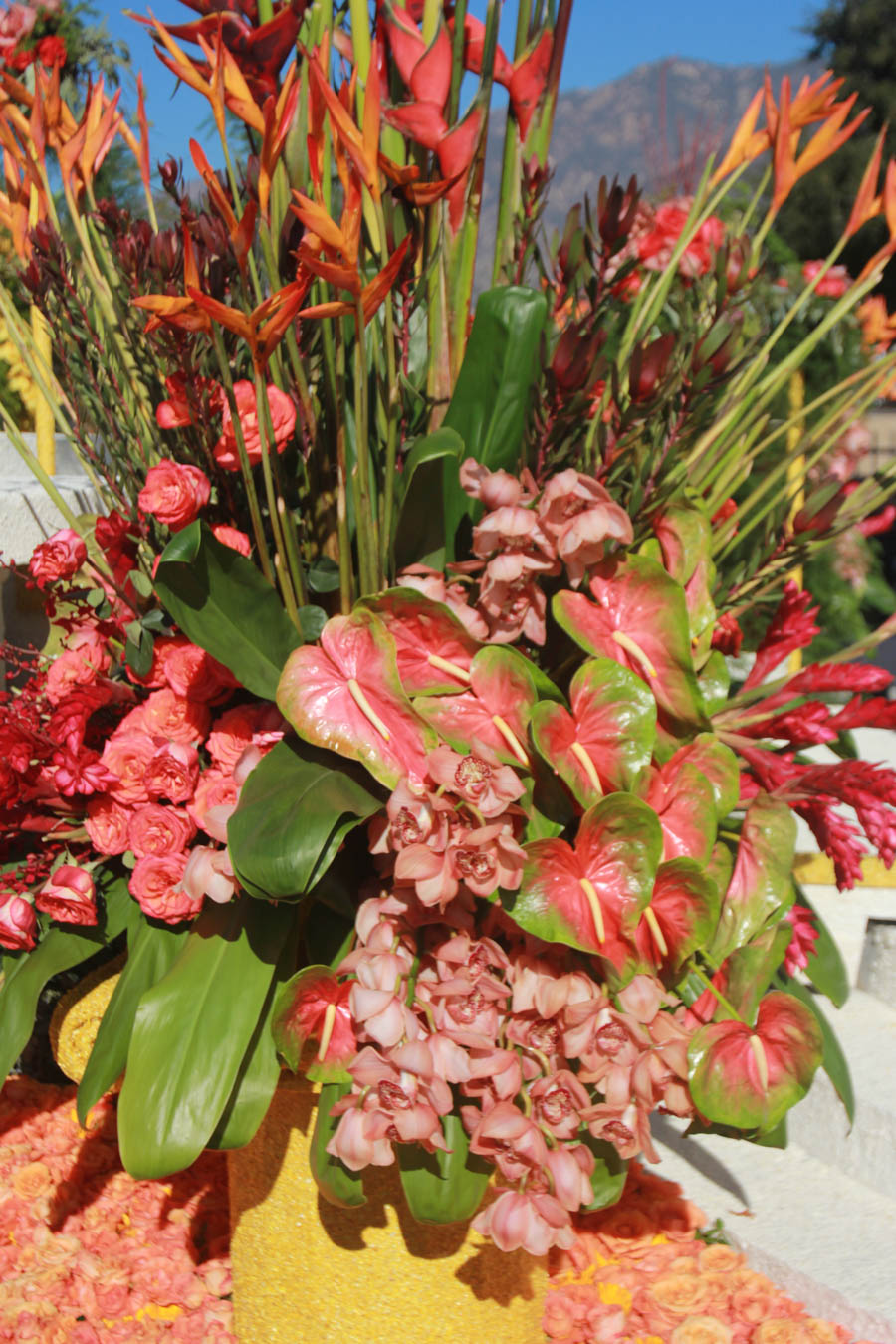
Anthuriums come is many colors
Did You Know? - Anthurium is a genus of about 1000 species of flowering plants, the largest genus of the arum family, Araceae.
General common names include anthurium, tailflower, flamingo flower, and laceleaf.
The genus is native to the Americas, where it is distributed from northern Mexico to northern Argentina and parts of the Caribbean
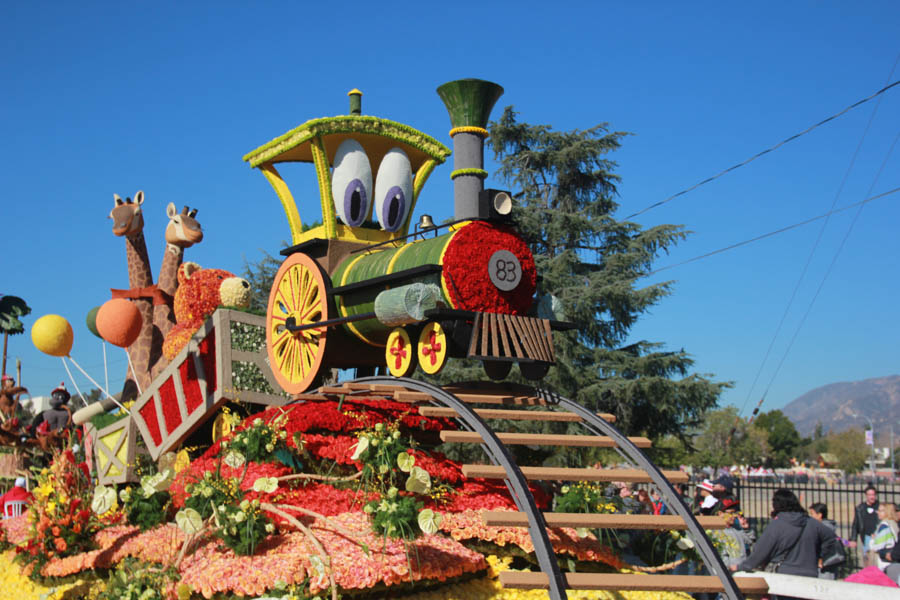
Look out... Here it comes
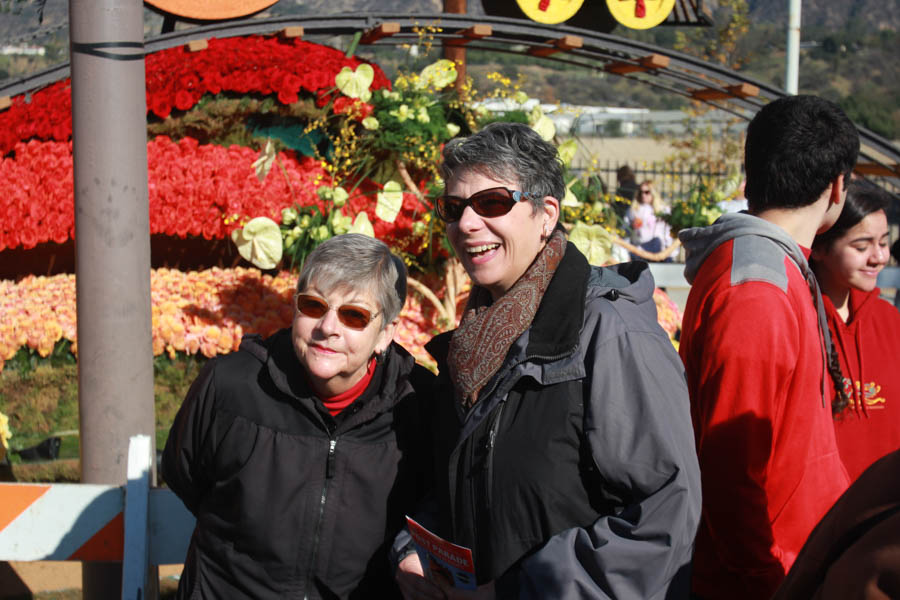
Sue and Kerstin up close with the floats

Now that there is yellow

Monkeying around

The fruit was beautiful
Did You Know? - In common language usage, "fruit" normally means the fleshy seed-associated structures of a plant that are sweet or sour and edible in the raw state, such as apples, oranges, grapes, strawberries, bananas, and lemons.
On the other hand, the botanical sense of "fruit" includes many structures that are not commonly called "fruits", such as bean pods, corn kernels, wheat grains, and tomatoes.

The trunks are made of rose stems

Dig the carrots!

The artists are amazing

We had a 2+ mile walk in 2 hours (Courtesy of Hans Thedens)
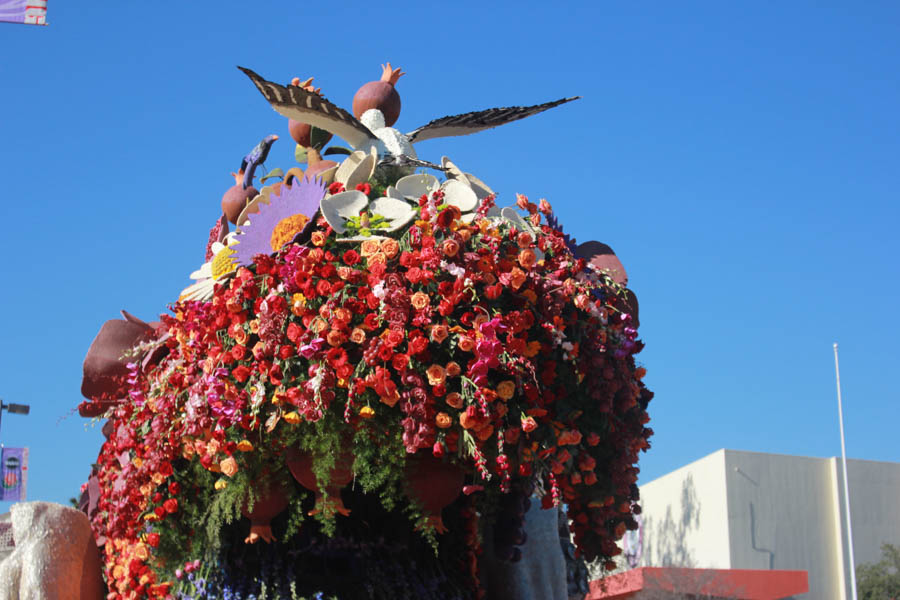
The roses were so diverse in color
Did You Know? - Directly after the parade, floats are stripped to their chassis. Structural steel elements are reused where possible; organic materials and sculptural steel are recycled.
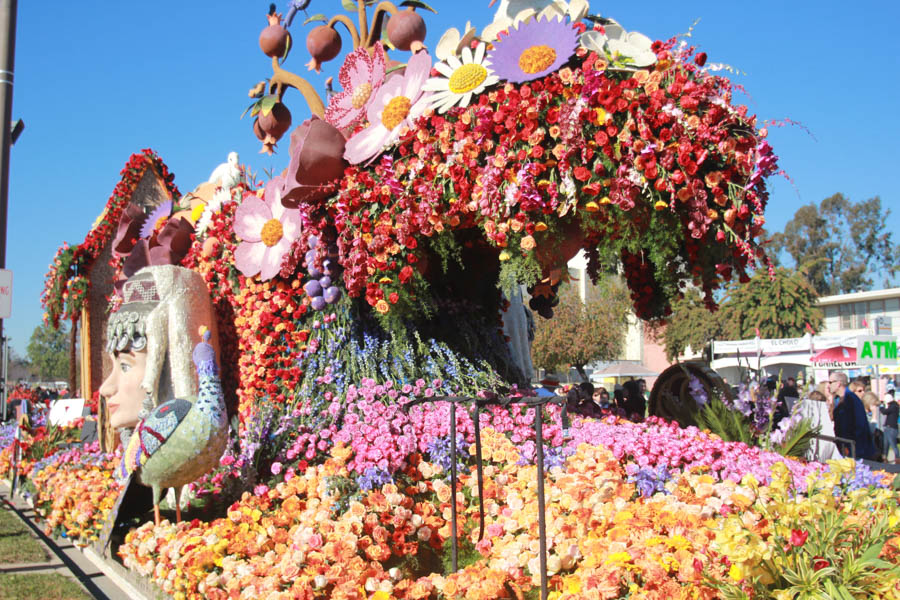
Flower of every color you could imagine
Did You Know? - Shortly after each year's parade is over, and the next year's parade theme is announced, the parade sponsors and participating communities start to plan their floats for the following year. A "theme draft" meeting is held in mid-February where builders select their float theme. The Tournament assures that there are not too many similar floats.
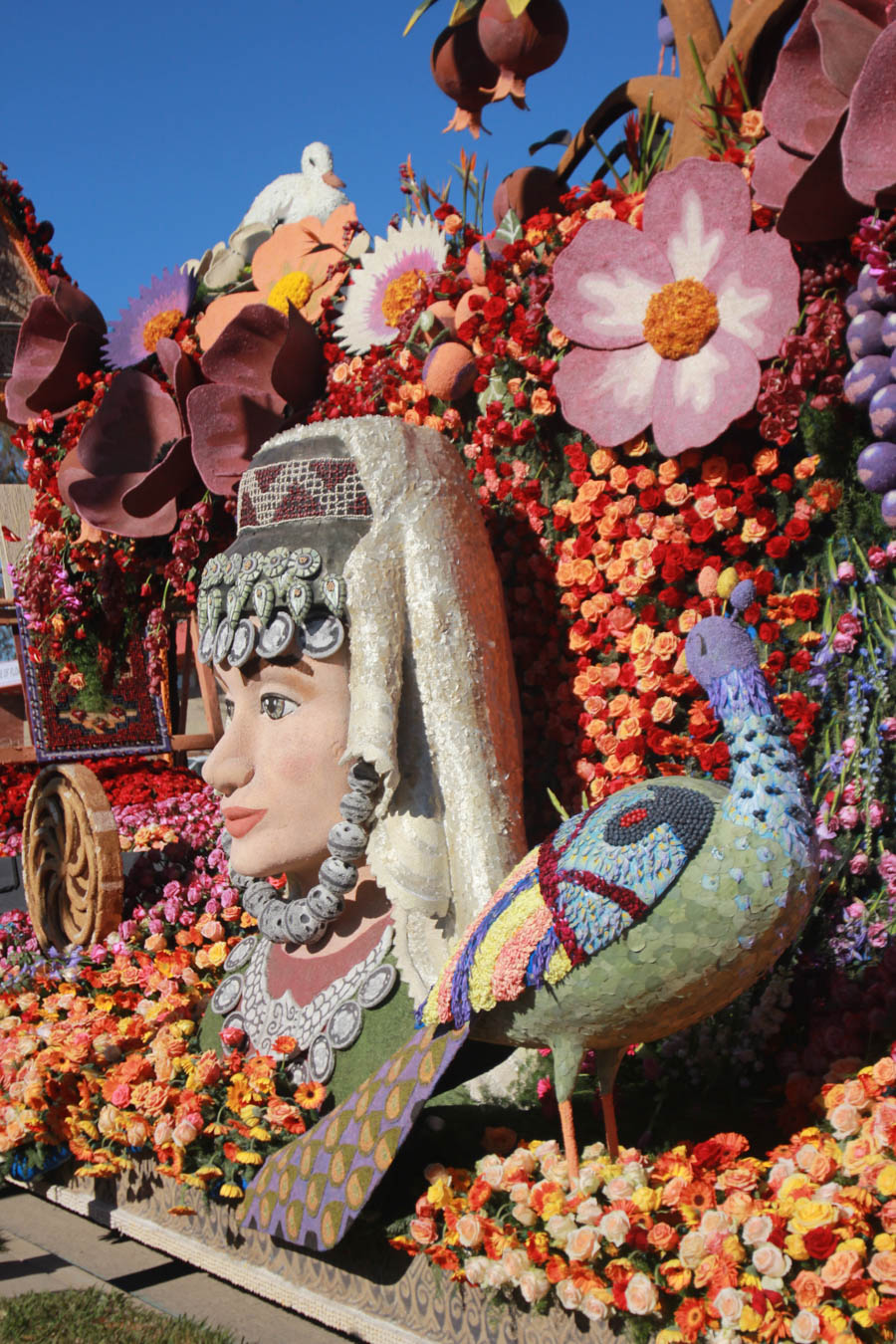
The flesh colors are fantastic... The peacock wings have blue berries on it
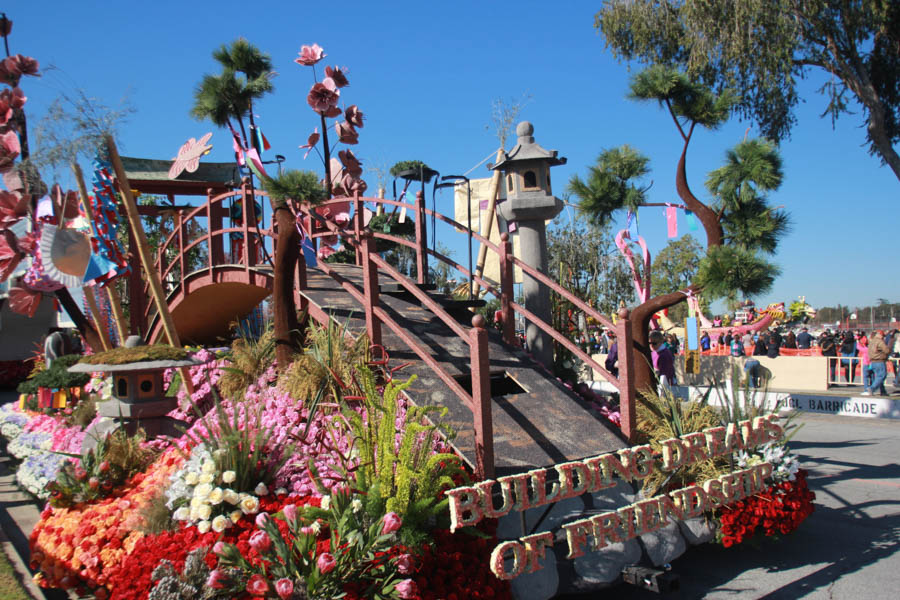
The Japanese side of the bridge

There were a couple of exceptions this year to the rule of covering the
float in live items... The Japanese float has some origami and lanterns
(Courtesy of Hans Thedens)
Did You Know? - Every square inch of the exposed surface of a float entered in the Rose Parade strictly must be covered with flowers or other natural materials. These other decorative applicants include bark, seed and leaves.
Decorating with the non-perishable materials is performed first. In the days following Christmas, the live additions to the float are applied by volunteers or hired workers.
Many people end each day covered in glue and petals. Delicate flowers are placed in individual vials of water and set into the float one-by-one. The Tournament of Roses is the largest consumer of flowers in the world, and flowers arrive from all over the world.

The American side of the bridge
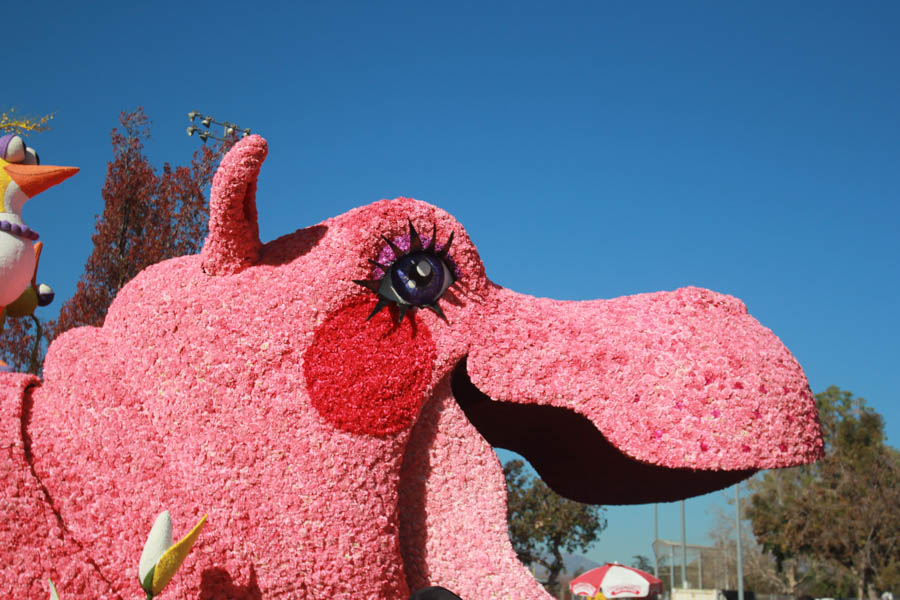
He was spitting balloons during the parade

Hans was sure the hippo winked at him (Courtesy of Hans Thedens)
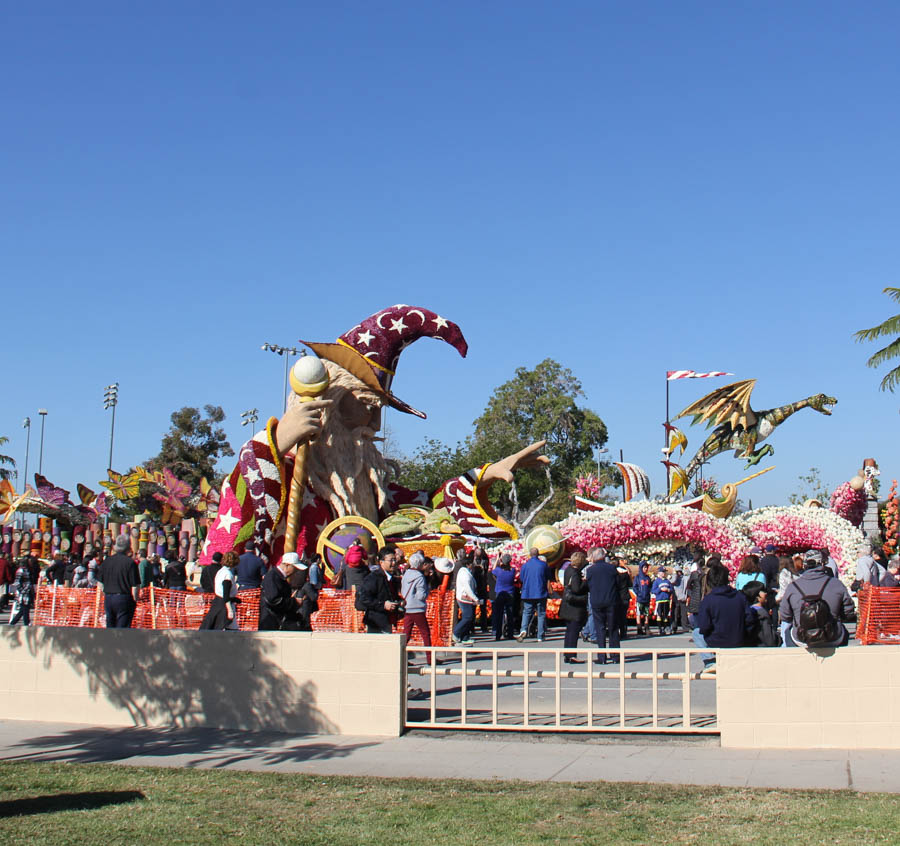
Where is his crystal ball (Courtesy of Hans Thedens)

Bite me!
Did You Know? - Many floats, along with their drive train, include computer-controlled robotic mechanisms to animate the floats. Most float drivers can only see the ground below them. An observer communicates by intercom to the driver. Most observers are hidden within the float and have limited visibility.
Each float has a Tournament Member (Float Liaison) assigned to it who shepherds the float from the float barn to the formation area and down the parade route.
Most ride on motor scooters although some walk. The Float Liaisons communicate with the float's observer by hand signals. At the two corners other Tournament Members direct the floats in addition to the Float Liaisons.
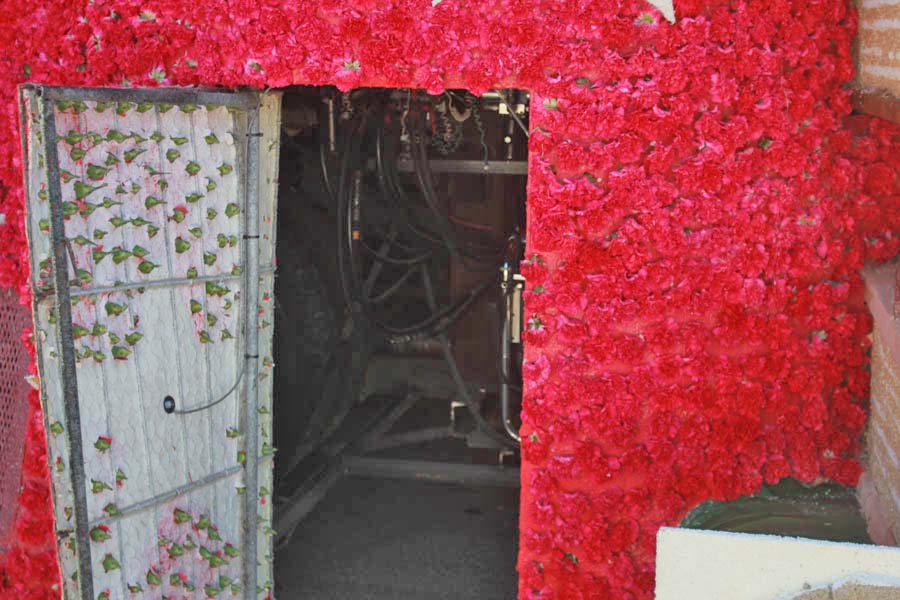
The inside is a hydraulic nightmare
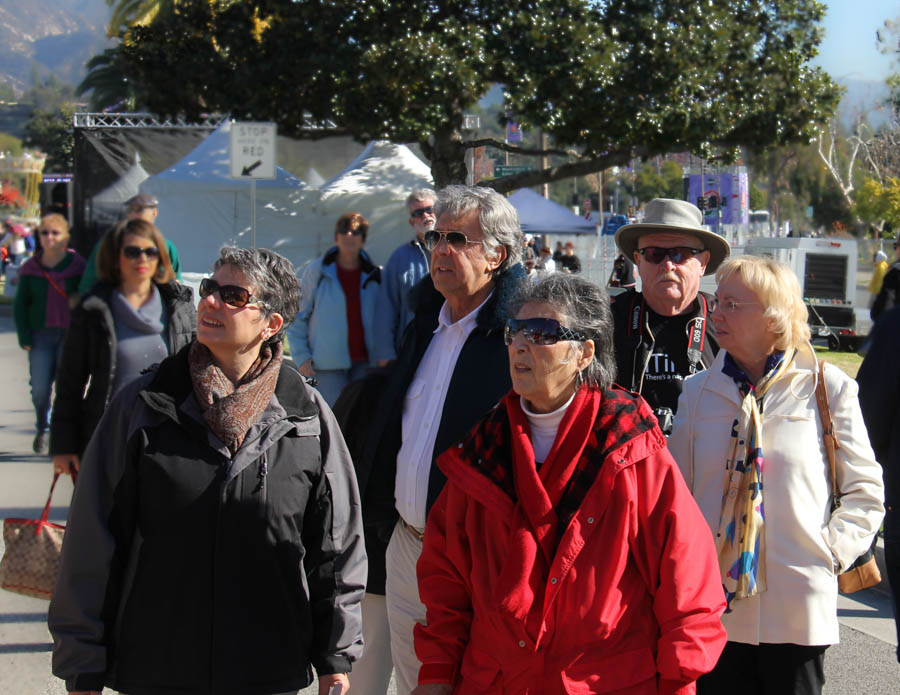
The animated floats were quite amazing (Courtesy of Hans Thedens)
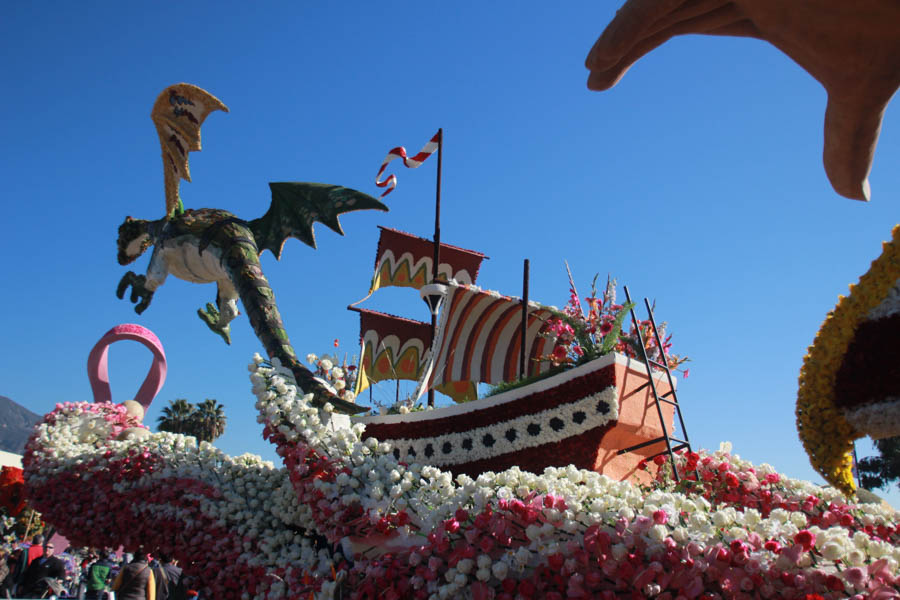
Sailing away
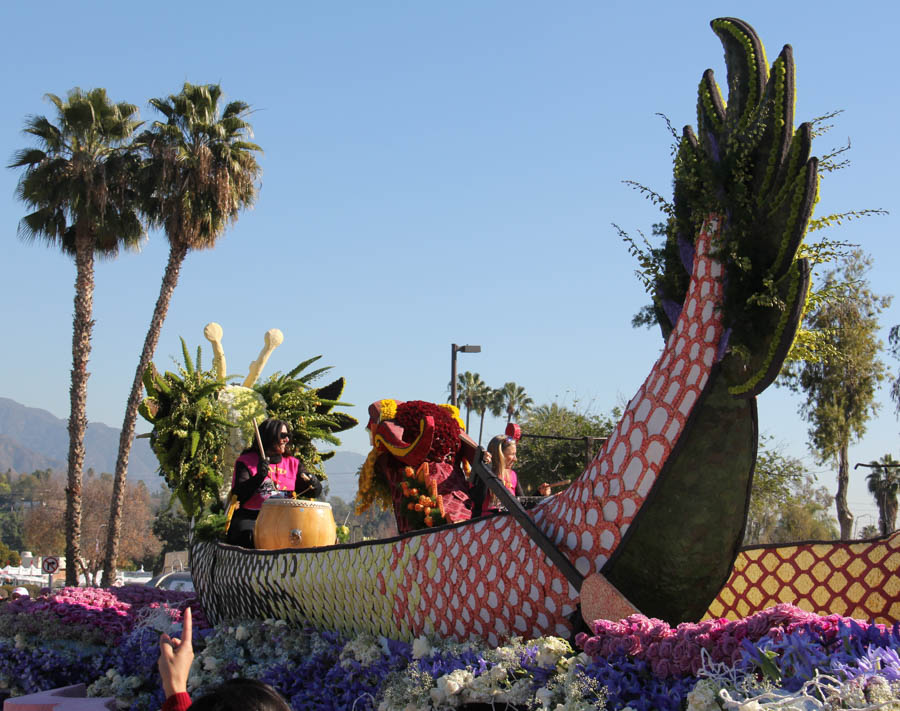
The drummers could pound out a beat (Courtesy of Hans Thedens)
Did You Know? - It is estimated that it takes 60 volunteers working 10 hours a day for 10 days to decorate one float.
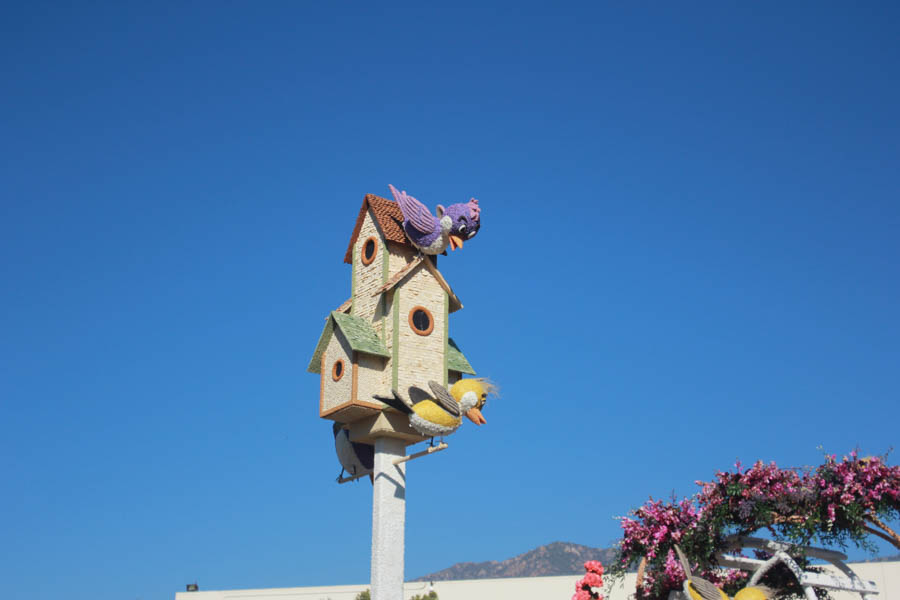
Great view
Did You Know? - 15 tons of steel along with 10,000 feet (3,000 m) of chicken wire for the framework of a float
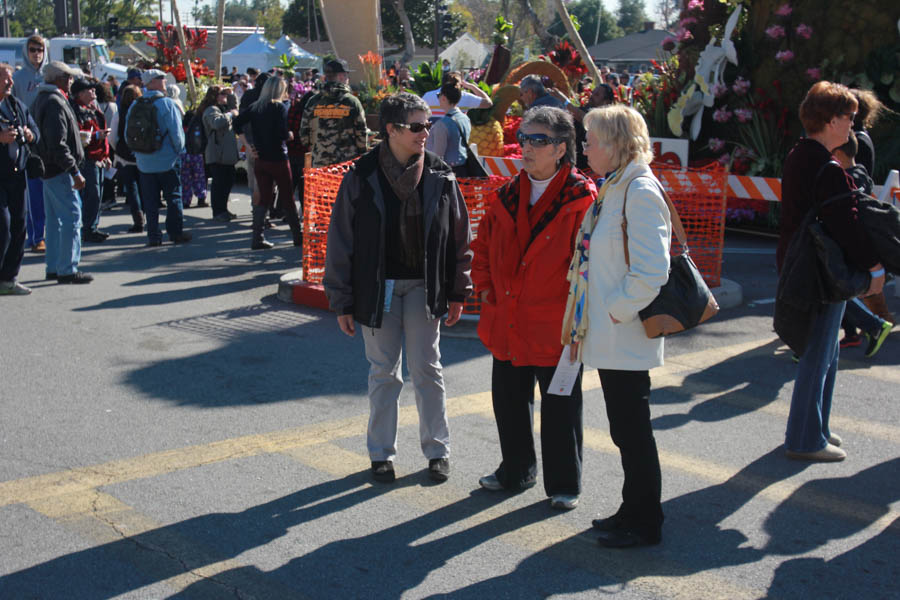
Catching our breath
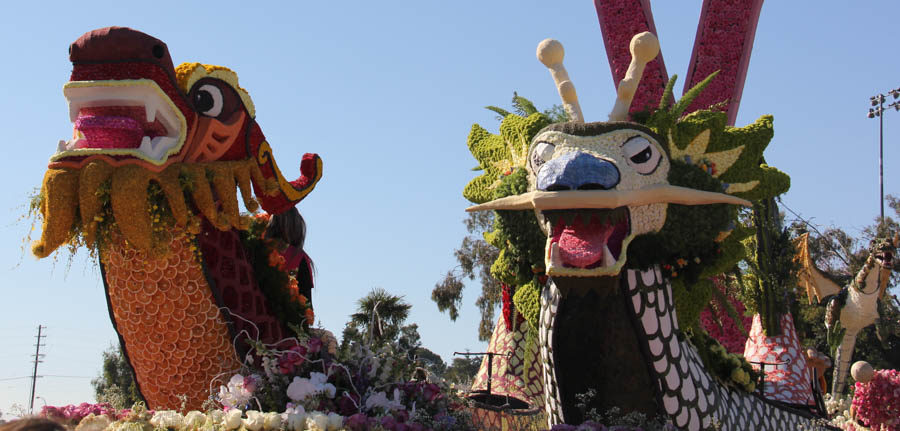
Do not worry ladies... We will save you from the monsters
(Courtesy of Hans Thedens)

Time for a break (Courtesy of Hans Thedens)

"The End"
Did You Know? - Floats must collapse to no more than 16.5 ft. (5.0 m). high, to pass under a freeway overpass

Another great effort
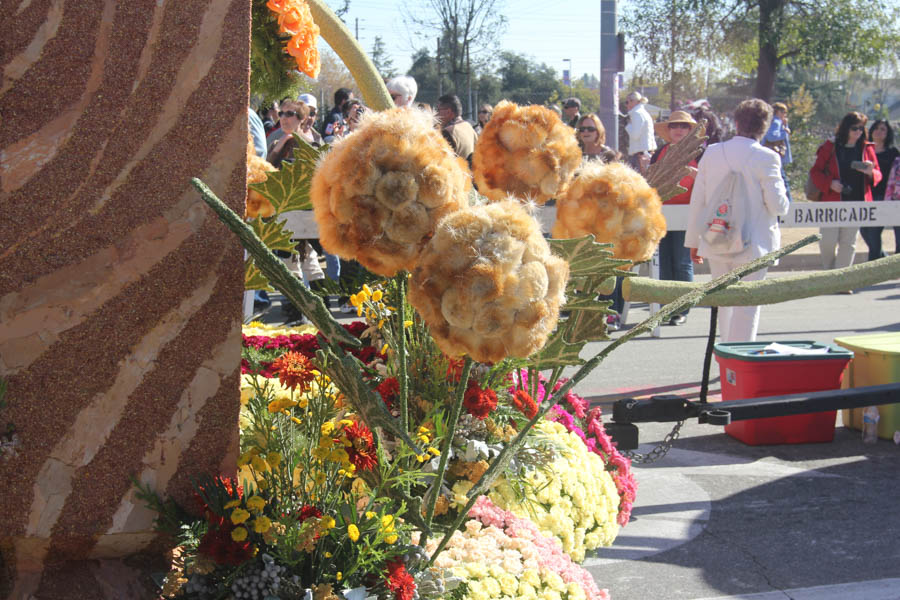
The thistles were delightful... Related to artichoke hearts

The seed packages were so well done
Did You Know? - Length of parade is 5.5 miles (8.9 km), about 2.25 hours long at 2.5 miles (4.0 km) per hour pace

The lunar lander
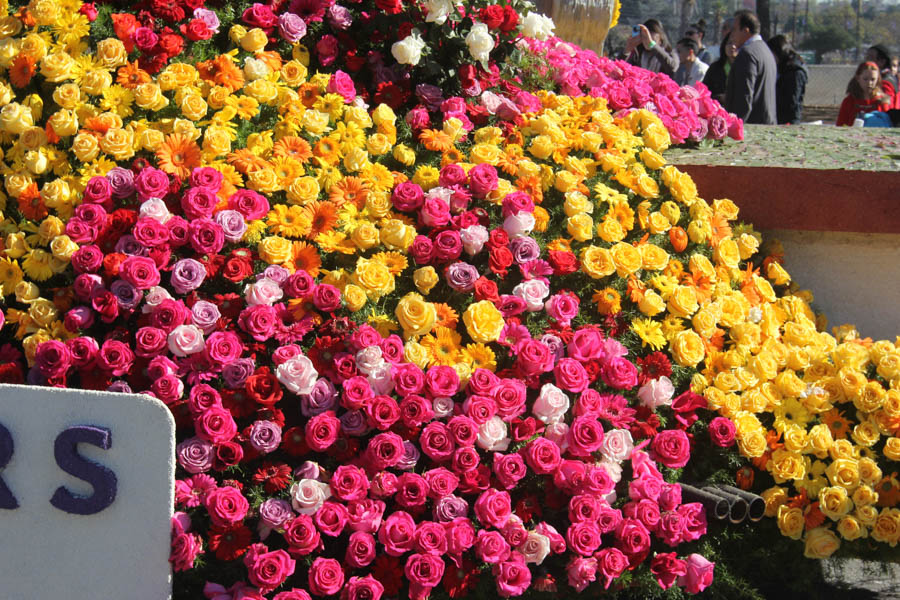
Colors were brilliant today because of the cold weather
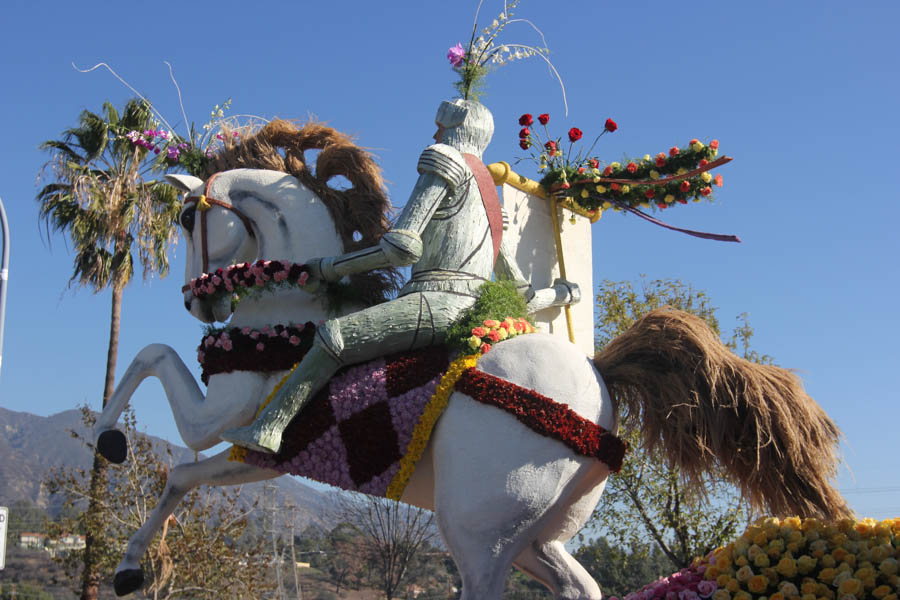
Great horse
and knight
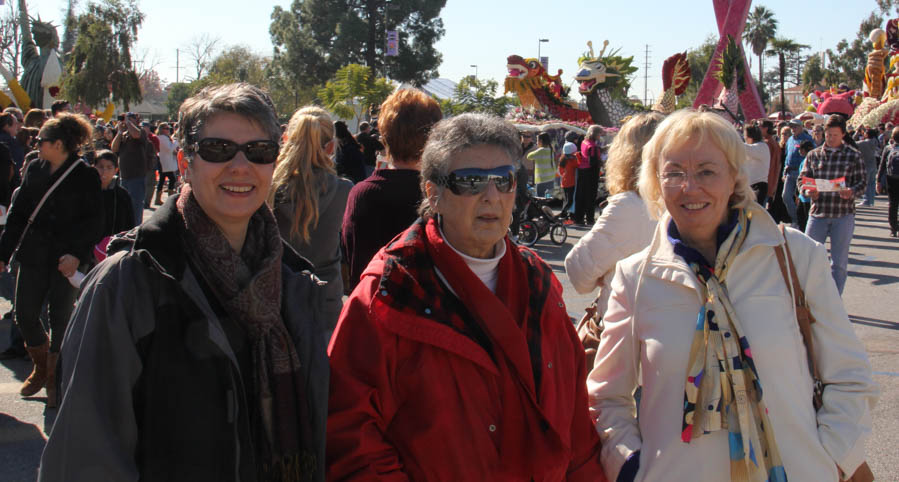
The ladies studied the knight (Courtesy of Hans Thedens)

Sue was ready to play golf
